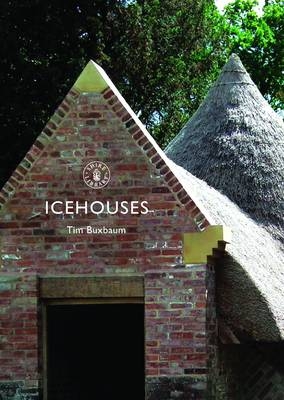
Icehouses
Seiten
2014
Shire Publications (Verlag)
978-0-7478-1300-2 (ISBN)
Shire Publications (Verlag)
978-0-7478-1300-2 (ISBN)
Often hidden away or incorporated into other architectural features, icehouses are a largely forgotten part of our heritage. This book explains how icehouses developed; how, when and where they were built; and how they operated, including a chapter on icehouses from around the world.
Often hidden away or incorporated into other architectural features, icehouses are a largely forgotten part of our heritage. As winters warmed through the nineteenth century, and supplies of natural ice declined, the development of artificial refrigeration made redundant these curious buildings – often status symbols in themselves – which had been designed to store winter snow and ice into the summer. Icehouses allowed perishables to be preserved, chilled delicacies to be enjoyed, and fevers to be relieved – and on a commercial scale they fed an international trade that carried snow from mountain peaks and ice from frozen lakes to supply the needs of industry, markets and householders. In this illustrated introduction, Tim Buxbaum explains how icehouses developed; how, when and where they were built; and how they operated, including a chapter on icehouses from around the world.
Often hidden away or incorporated into other architectural features, icehouses are a largely forgotten part of our heritage. As winters warmed through the nineteenth century, and supplies of natural ice declined, the development of artificial refrigeration made redundant these curious buildings – often status symbols in themselves – which had been designed to store winter snow and ice into the summer. Icehouses allowed perishables to be preserved, chilled delicacies to be enjoyed, and fevers to be relieved – and on a commercial scale they fed an international trade that carried snow from mountain peaks and ice from frozen lakes to supply the needs of industry, markets and householders. In this illustrated introduction, Tim Buxbaum explains how icehouses developed; how, when and where they were built; and how they operated, including a chapter on icehouses from around the world.
Tim Buxbaum is a chartered architect in private practice in Suffolk. This book stems from his interest in garden architecture, which is reflected in his other publications, Scottish Garden Buildings, From Food to Folly, and, for Shire Publications, Scottish Doocots and Pargeting.
Introduction / Design and Appearance / Operation / The Fashionable Icehouse / Commercial Icehouses / Icehouses Around the World / Conclusion / Further Reading / Places to Visit / Index
| Erscheint lt. Verlag | 10.5.2014 |
|---|---|
| Reihe/Serie | Shire Library |
| Zusatzinfo | 2 b/w; 4 col |
| Verlagsort | London |
| Sprache | englisch |
| Maße | 149 x 210 mm |
| Gewicht | 160 g |
| Themenwelt | Kunst / Musik / Theater ► Kunstgeschichte / Kunststile |
| Sachbuch/Ratgeber | |
| Reiseführer ► Europa ► Großbritannien | |
| Geschichte ► Teilgebiete der Geschichte ► Kulturgeschichte | |
| Geschichte ► Teilgebiete der Geschichte ► Wirtschaftsgeschichte | |
| Technik ► Architektur | |
| Technik ► Maschinenbau | |
| ISBN-10 | 0-7478-1300-0 / 0747813000 |
| ISBN-13 | 978-0-7478-1300-2 / 9780747813002 |
| Zustand | Neuware |
| Haben Sie eine Frage zum Produkt? |
Mehr entdecken
aus dem Bereich
aus dem Bereich
individuell reisen mit vielen praktischen Tipps
Buch | Softcover (2024)
Michael Müller (Verlag)
CHF 43,90
Reiseführer mit Stadtplan, 4 Spaziergängen und kostenloser Web-App
Buch | Softcover (2023)
Reise Know-How (Verlag)
CHF 22,90


